|
Centrip Editorial Board
“WASHOKU”: Try the Japanese home-cooking, with ingredients from Takayama

Sushi, Sukiyaki, Tempura… You may already have tried different types of “Washoku”, traditional Japanese cuisine.
However, how much do you know about actually cooking Japanese food?
If you want to take a deeper look into the essence of Japanese food culture and lifestyle, let me take you to “Green Cooking Studio” in Takayama.

Located in the heart of the picturesque city, “Green Cooking Studio” is a cosy kitchen where you can take lessons in traditional Japanese home cooking.
From JR Takayama station / Takayama bus terminal, take a pleasant 15-minute walk towards the old town, and the studio is just 1 minute away from the famous Miyagawa morning market.
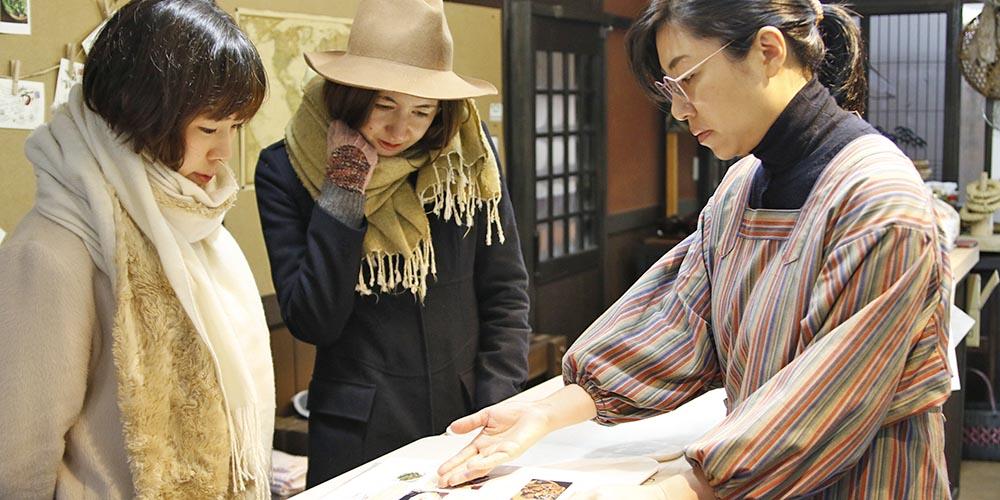
Here’s the overview of a typical lesson
- 1. Shopping for ingredients in the city (approx. 1hour)
- 2. Introduction to seasonings & food culture in the Hida Takayama region (approx. 10mins)
- 3. Cooking Time (approx. 1hour 50mins)
- 4. Dine together in the dining room. Bon Appetit! (approx. 30mins)
Menu Sample (subject to change according to the season)
Miso soup (味噌汁)- Traditional Japanese soup with original miso mix
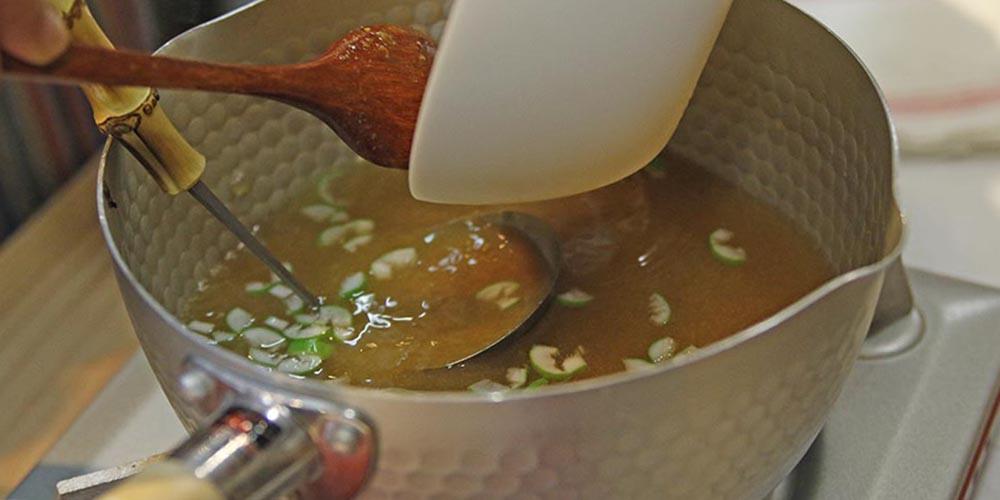
“Dashi-Maki” omelette (だし巻き卵)- Rolled omelette seasoned with dashi stock
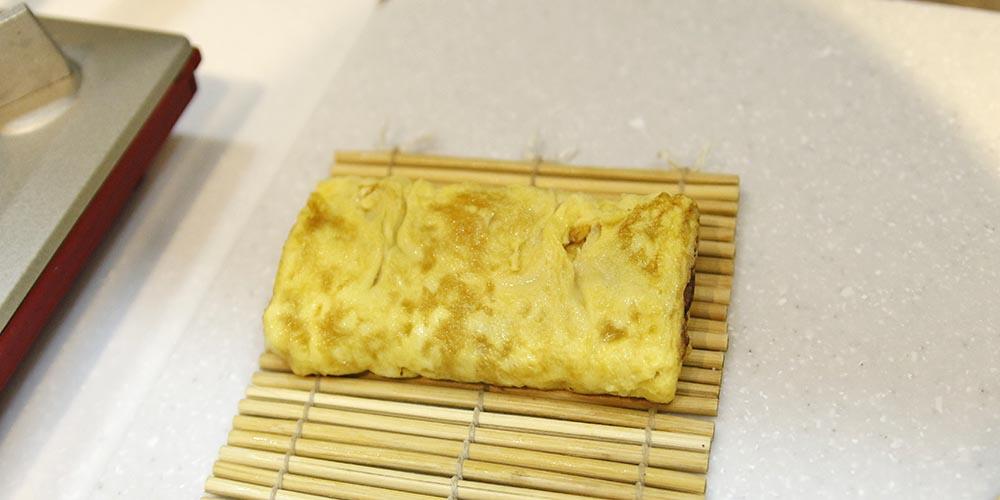
“Suttate Nabe” hotpot (すったて鍋)- A local specialty hotpot with tofu paste and chicken dumplings

Sushi rolls (巻き寿司)- Rice and filling (often seafood and vegetables) wrapped in seaweed. A popular dish for festive occasions
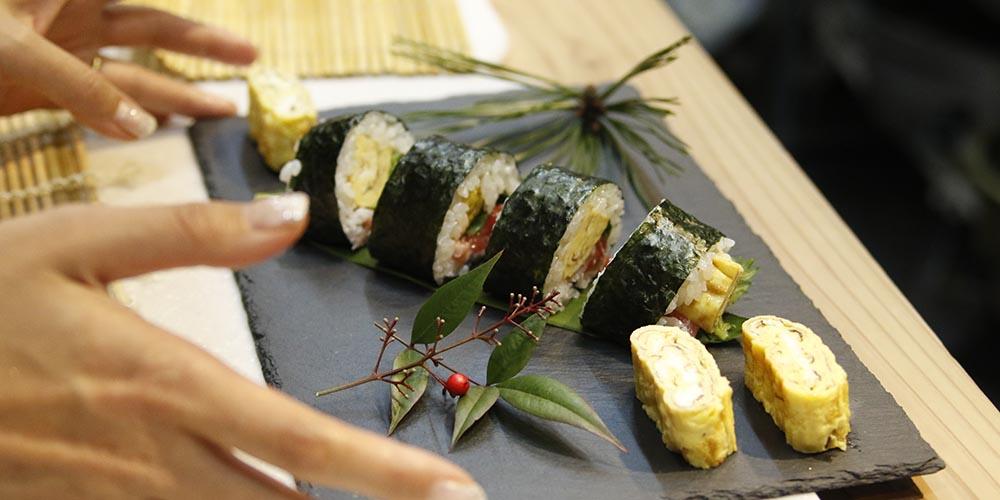
Taro dumplings with wild “egoma” sauce (里芋のお団子とエゴマだれ)- “Egoma”, (perilla, or wild sesame), is a local specialty and its sauce is often combined with seasonal vegetables.
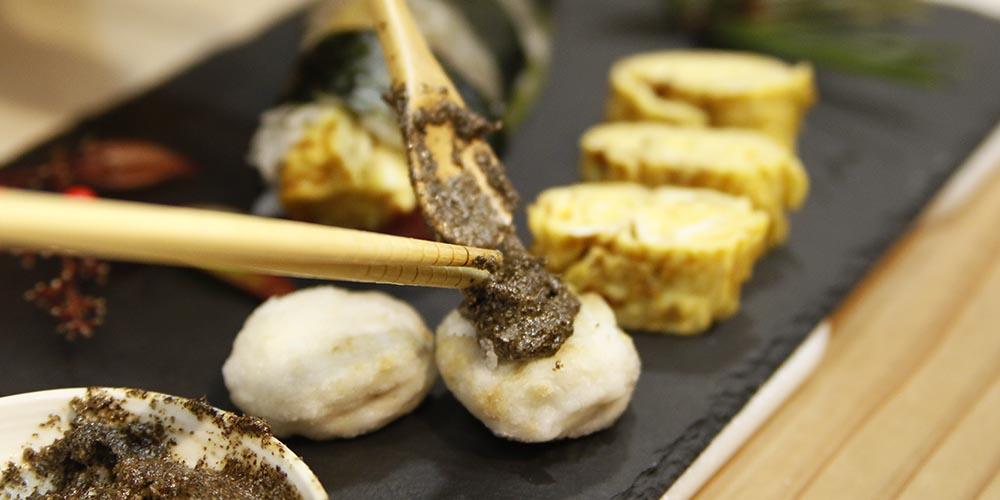
1. Shopping for ingredients in the city (approx. 1hour)
The lesson starts with a visit to the market and local shops of Takayama. The whole city is filled with a nostalgic atmosphere.
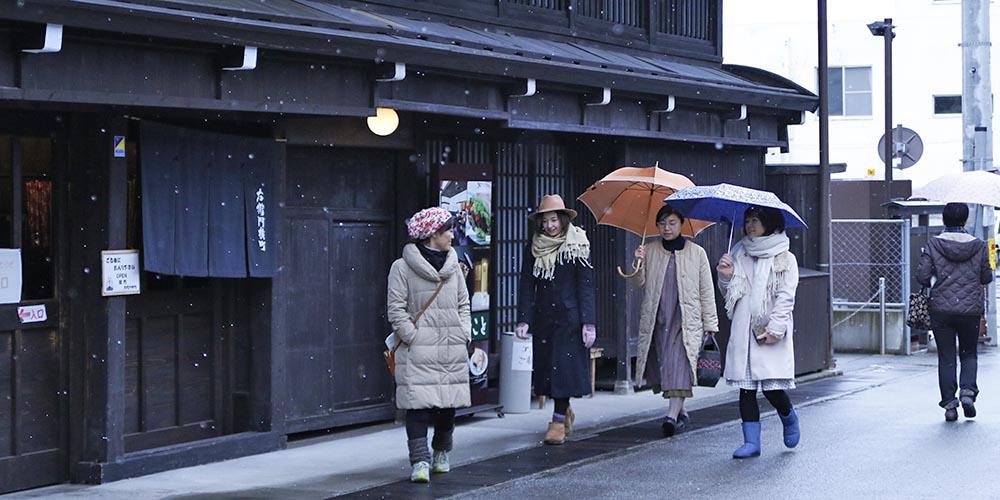
Explore and experience the city like a local resident by shopping for fresh seasonal fruits and vegetables at the market, going around the specialty miso and tofu shops, and talking to the locals.
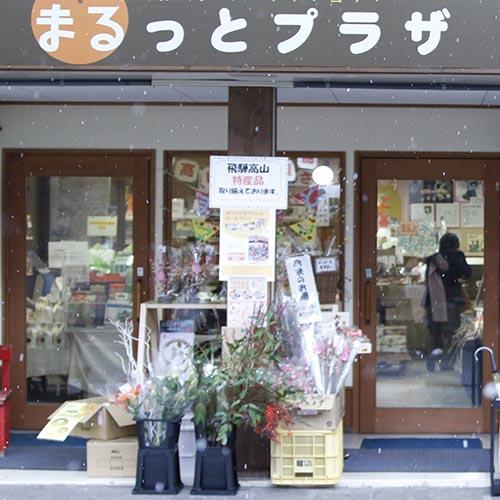

I got carried away at the tofu shop for delicacies to take home!
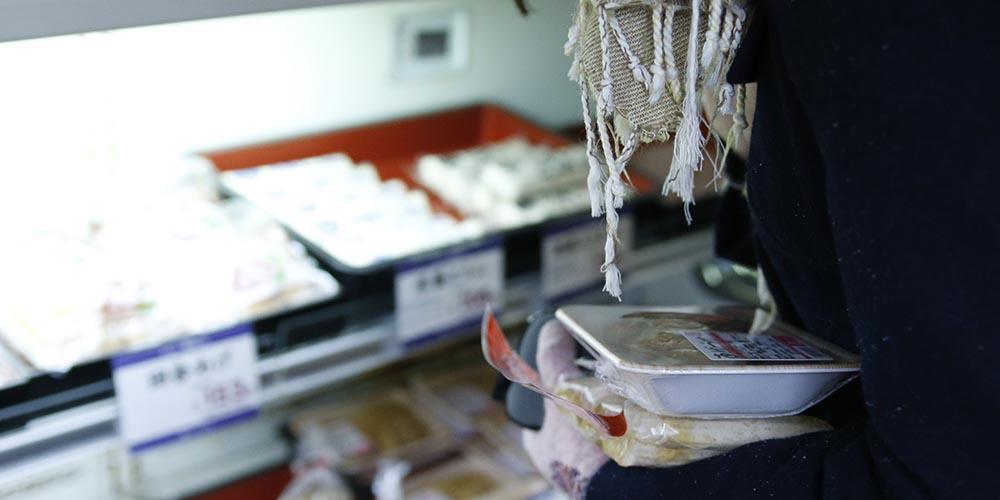
Visiting small specialty stores of local craftsmen is a rare and joyful experience in this modern age of mega-supermarkets and shopping malls.
2. Introduction to seasonings & food culture in the Hida Takayama region (approx. 10mins)
Take a break with some homemade juice once you’re back in the kitchen.
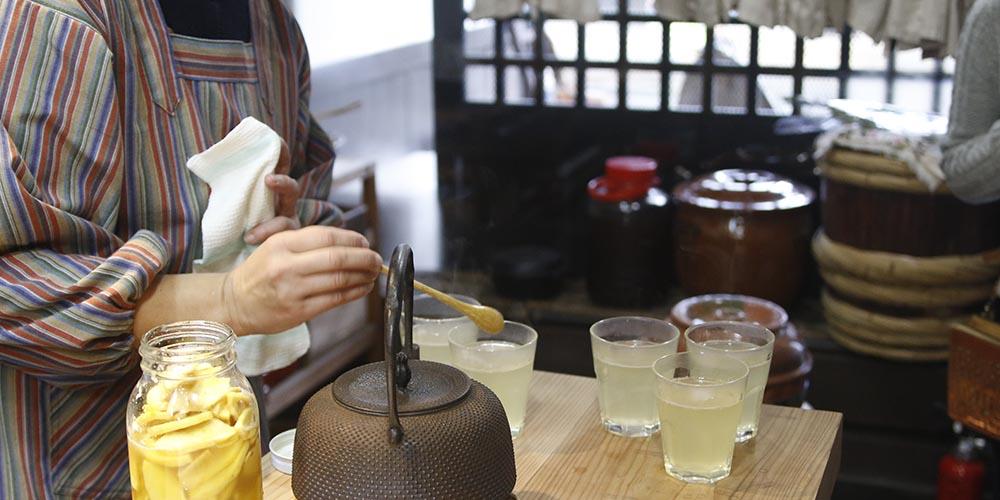
I was particularly impressed with this warm hospitality…It was snowing outside, and I felt right at home with a hot citrus & honey drink in my hand.
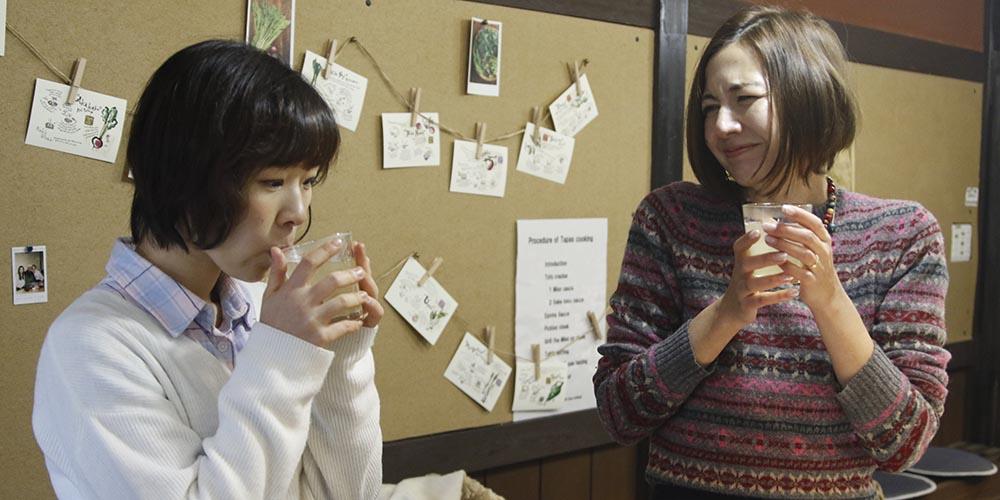
Soon we were supplied with “Samui” aprons and a cloth to cover our hair, which is a very traditional style in the kitchen.
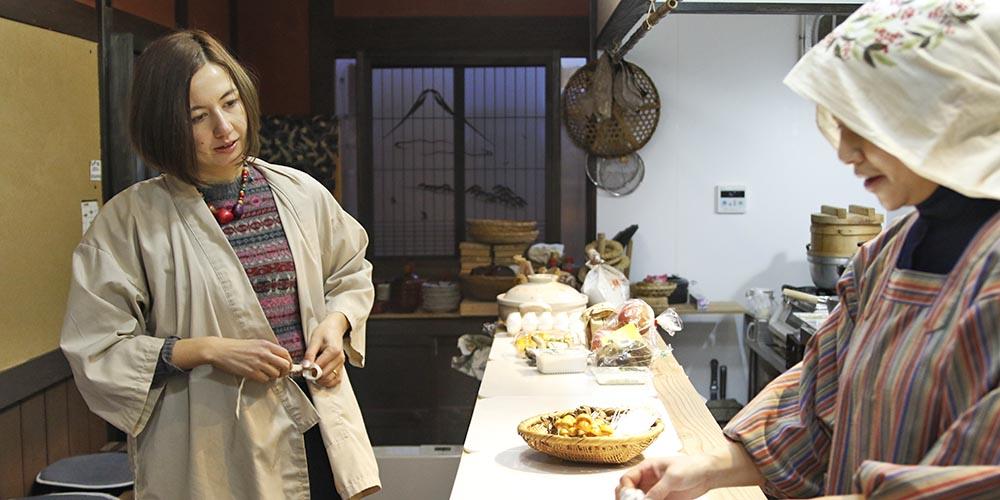
I’d never worn a Samui in my whole life despite having lived in Japan for almost 30 years.
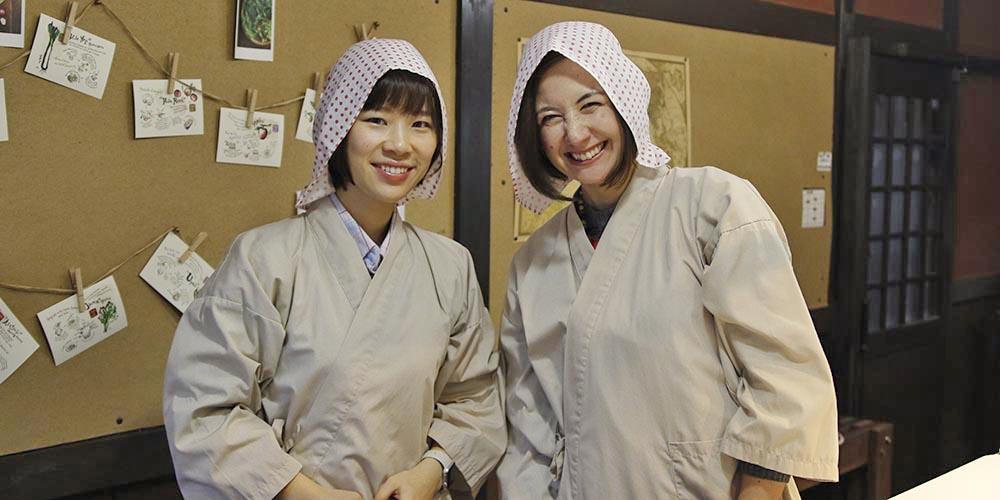
Rocking the look, don’t you think? Once ready, the staff will guide you through the procedure with easy-to-understand picture cards.
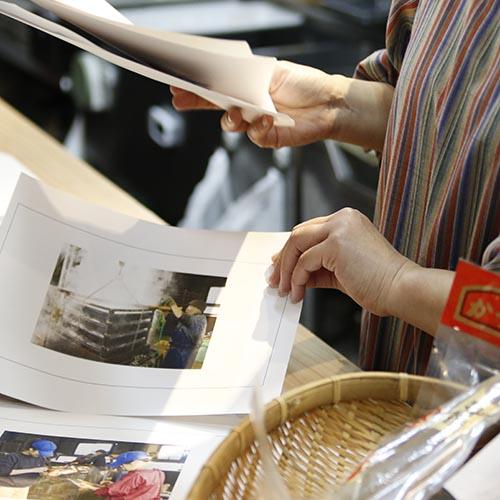
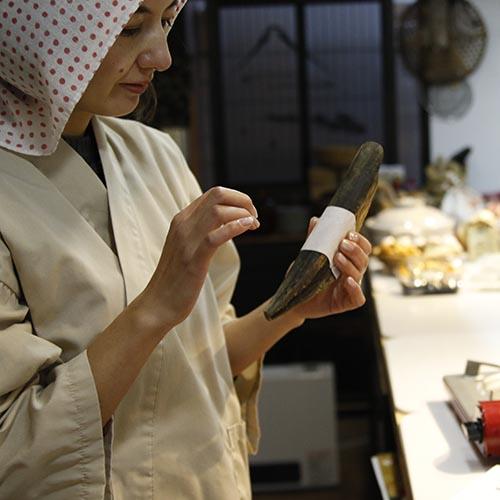
3. Cooking Time (approx. 1hour 50mins)
Time to cook! You can learn everything : from blending the right miso to suit your taste...
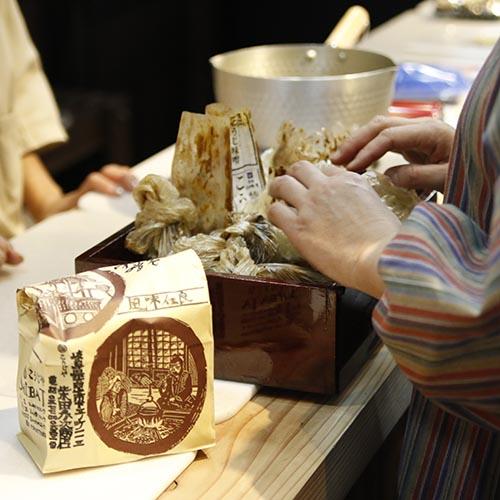
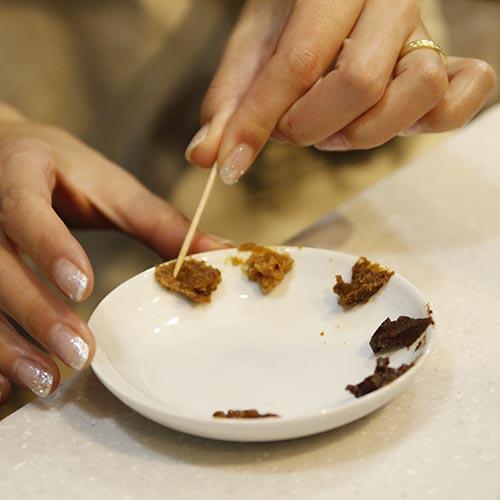
making delicious bonito and seaweed broth for the hotpot...
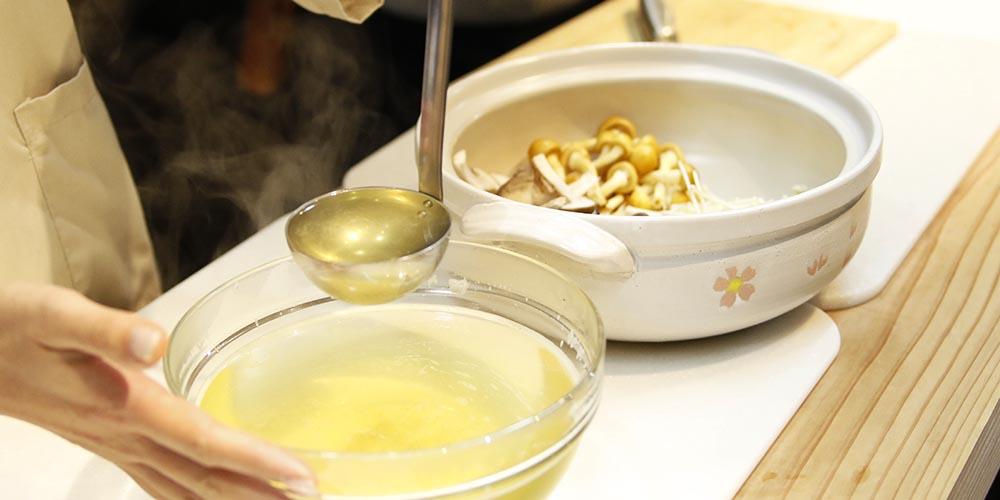
to rolling the “makisu” mat to make a beautiful sushi roll.
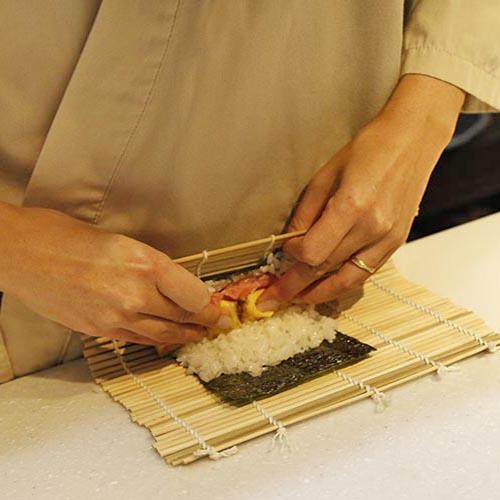
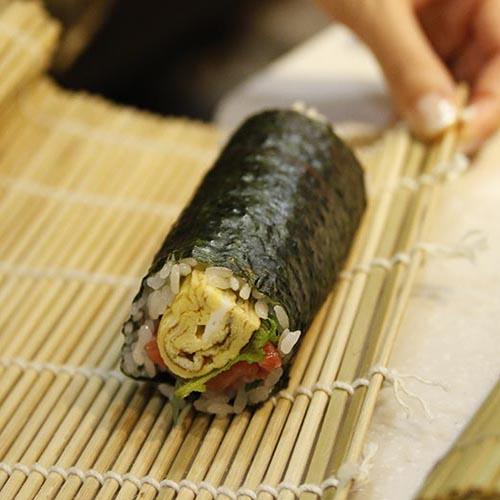
What I enjoyed most was using all the different Japanese kitchen utensils. Heavy clay pots for cooking rice and hotpot, rectangular frying pans for “dashi-maki” omelettes, and small grinding bowls for crushing sesame seeds…
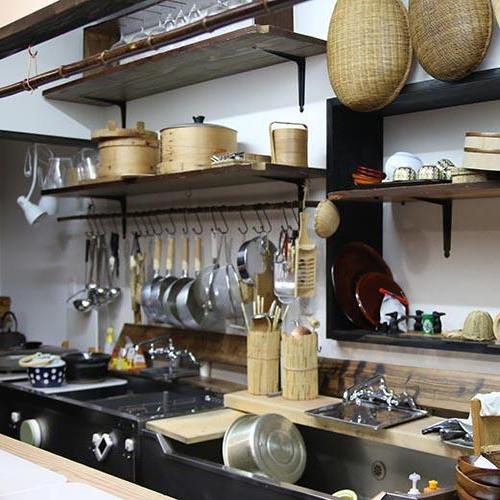
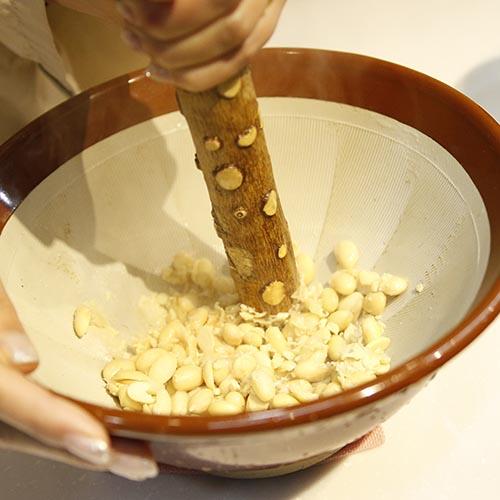
These are all unique kitchen utensils that are commonly used in normal Japanese households, and they are so much fun to use.
I must admit I’d never successfully made a dashi-maki omelette in my life until the lesson, and there I was perfecting the art of rolling the eggs, thanks to the great teacher and the frying pan.
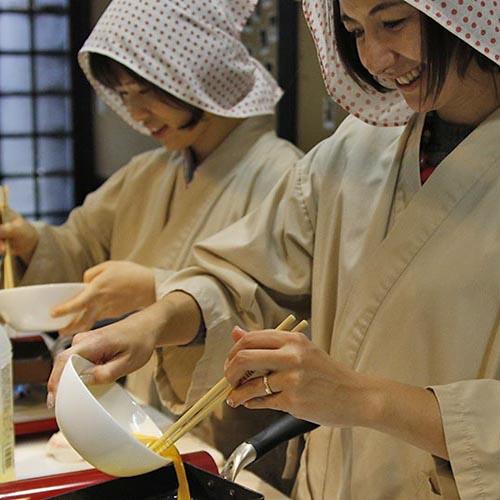

It’s also great that you are given printed copies of recipes to take home, so that you can impress your friends and family with your skills.
4. Dine together in the dining room. Bon Appetit! (approx. 30mins)
It’s finally dinner time! The presentation of the food is very important in Japanese food culture, so we prepared the plates with care.
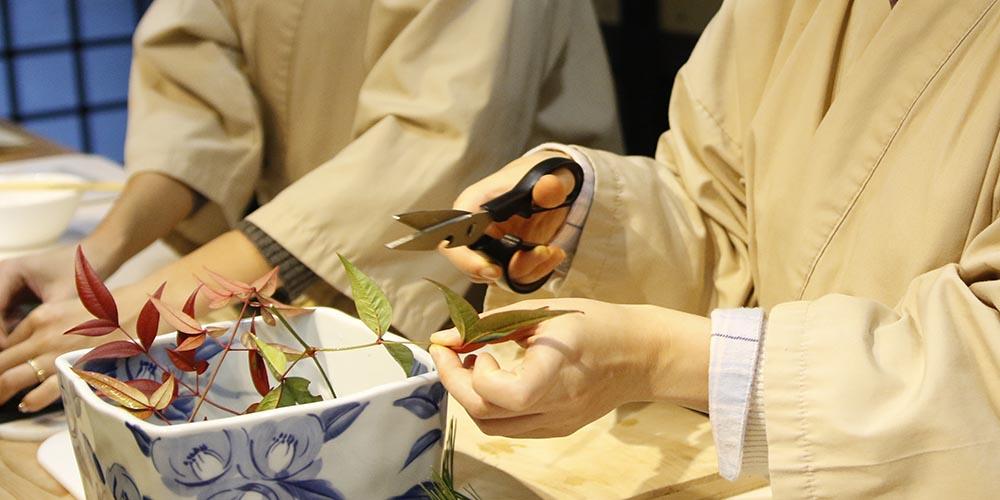
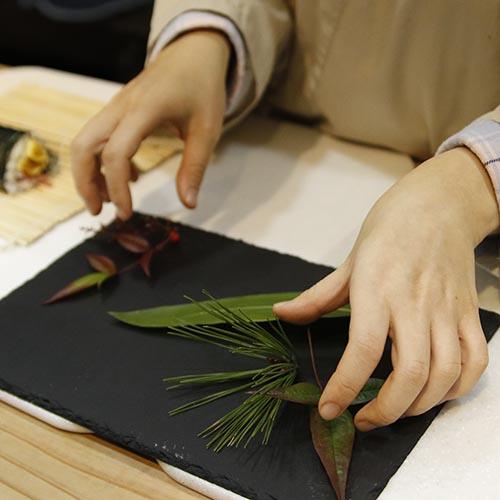
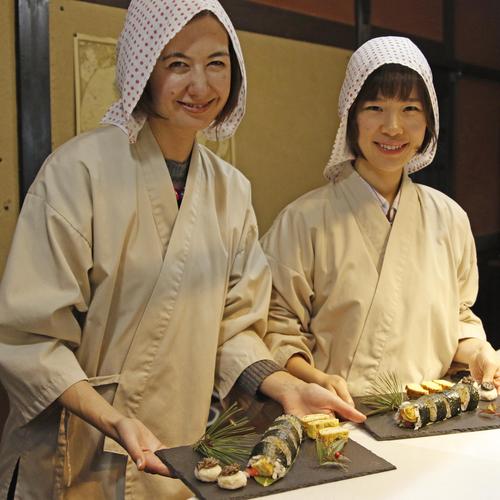
One of the best things about this cooking lesson is that you can dine and relax in the historic Takayama merchant house.
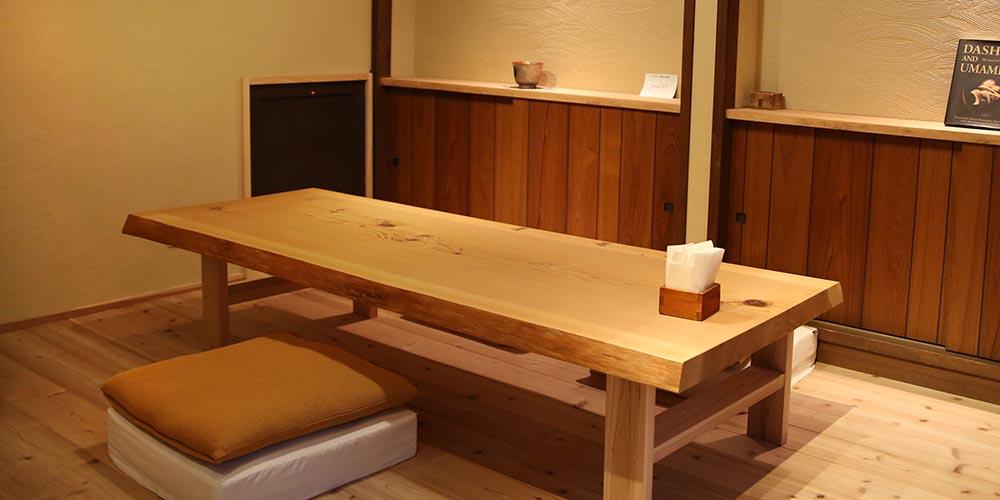
After a long afternoon of hard work, everything tasted great. Gochiso-sama-deshita!
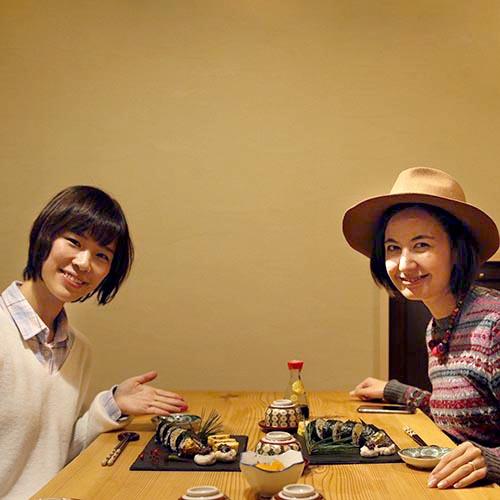
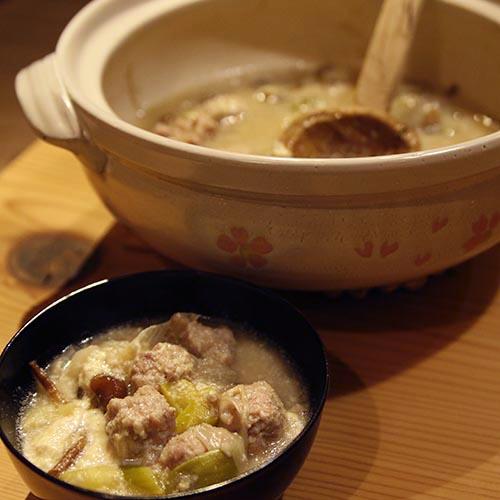
“Washoku” has been registered as a UNESCO Intangible Cultural Heritage of Humanity since 2013. It certainly is wonderful just to taste it, but learning the art of cooking Japanese food in this beautiful historic city of Takayama will definitely be an eye-opening experience for you.
If you just added "Green Cooking Studio" to the list of places you wish to visit, make sure you do not forget to make a reservation in advance! (Reservation will be available online)



